Transporting cement is a critical aspect of the construction supply chain, ensuring that this essential material reaches job sites in optimal condition and on schedule. At CarMax Vehicle, we specialize in providing top-tier semi-trailers designed specifically for cement transportation. This guide delves into the best practices, equipment considerations, and logistical strategies to transport cement efficiently and safely.
Understanding Cement Transportation
Cement is a powdered material that, if not handled correctly, can lead to quality degradation and operational inefficiencies. Proper transportation ensures that cement maintains its quality, is delivered on time, and reaches the construction site without any loss or spillage.
Key Factors in Cement Transportation
- Material Preservation: Preventing moisture ingress and contamination.
- Efficiency: Maximizing load capacity while ensuring safety.
- Cost-Effectiveness: Minimizing transportation costs without compromising quality.
- Regulatory Compliance: Adhering to transportation laws and safety standards.
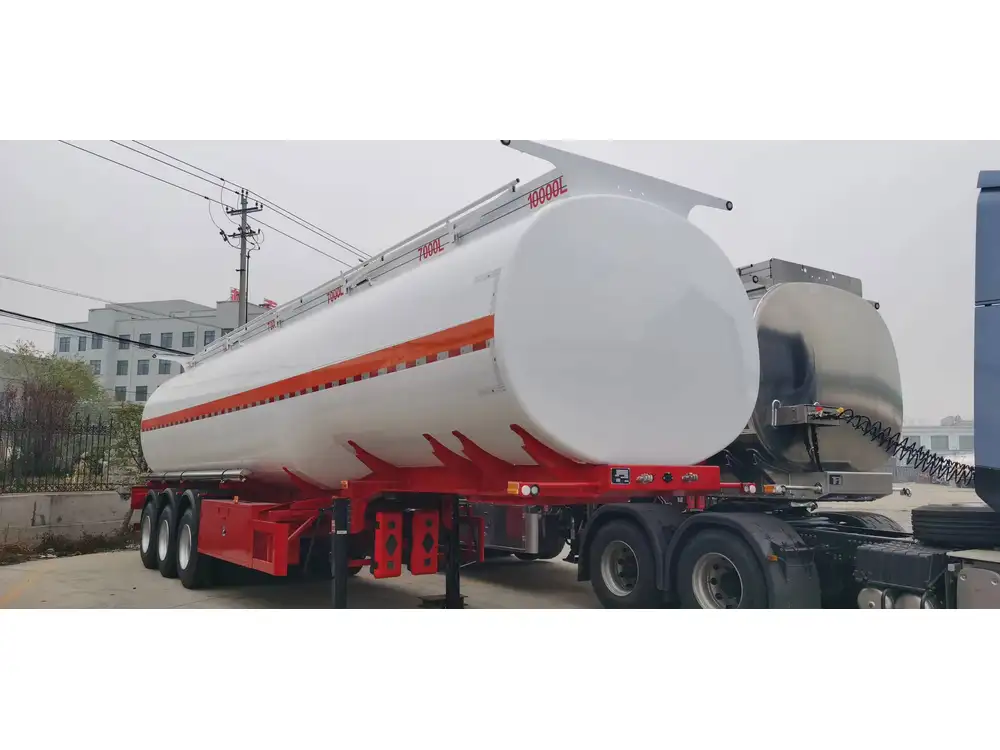
Choosing the Right Equipment
Selecting the appropriate semi-trailer is paramount in cement transportation. CarMax Trailer offers a range of specialized trailers tailored for cement logistics.
Types of Trailers for Cement Transport
| Trailer Type | Features | Benefits |
|---|---|---|
| Mixer Trailers | Rotating barrels to keep cement dry | Prevents moisture absorption |
| Bulk Cement Trailers | Large storage capacity with secure locking systems | Maximizes load per trip, reduces trips needed |
| Flatbed Trailers | Versatile design with protective coverings | Adaptable for various transportation needs |
Why Choose CarMax Trailer?
CarMax Trailer stands out due to its robust construction, advanced sealing technologies, and ergonomic design, ensuring that cement transportation is seamless and secure.

Best Practices for Cement Transportation
Implementing best practices can significantly enhance the efficiency and safety of cement transport operations.
1. Proper Loading Techniques
- Even Distribution: Ensure cement bags or bulk cement are evenly distributed to maintain trailer balance.
- Securing Loads: Use straps and securing mechanisms to prevent shifting during transit.
- Weight Management: Adhere to weight limits to avoid overloading, which can lead to accidents and increased wear on the trailer.
2. Moisture Control
Cement’s quality is highly sensitive to moisture. To prevent clumping and degradation:
- Use Weather-Resistant Trailers: Trailers with sealed containers protect against rain and humidity.
- Quick Unloading: Reduce the time cement spends in transit to minimize exposure to moisture.

3. Regular Maintenance of Trailers
Maintaining your CarMax Vehicle trailers ensures reliability and longevity.
- Routine Inspections: Check for leaks, structural integrity, and functionality of sealing systems.
- Timely Repairs: Address any damages promptly to prevent larger issues.
- Cleaning Procedures: Keep trailers clean to avoid contamination and maintain operational efficiency.
4. Driver Training and Safety
Well-trained drivers are essential for safe cement transportation.
- Handling Techniques: Educate drivers on proper loading and unloading procedures.
- Safety Protocols: Implement comprehensive safety training to handle emergencies and reduce accident risks.
- Compliance with Regulations: Ensure drivers are knowledgeable about transportation laws and standards.
Logistical Strategies for Efficient Cement Transport
Effective logistics planning can streamline cement transportation, saving time and resources.

Route Optimization
- Shortest and Safest Routes: Identify routes that minimize travel time while ensuring safety.
- Traffic Management: Use GPS and real-time traffic data to avoid delays caused by congestion.
- Weather Considerations: Plan routes taking into account weather forecasts to prevent disruptions.
Scheduling and Timing
- Peak Hours Avoidance: Transport cement during off-peak hours to reduce transit time and lower the risk of accidents.
- Just-in-Time Delivery: Coordinate deliveries to align with construction schedules, reducing the need for on-site storage.
Inventory Management
- Accurate Forecasting: Predict cement demand to plan transportation needs effectively.
- Stock Levels Monitoring: Keep track of inventory to prevent shortages or overstocking, optimizing transport frequency.

Technological Innovations in Cement Transportation
Leveraging technology can enhance the efficiency and reliability of cement transport operations.
Telematics and Tracking Systems
Implementing telematics allows real-time monitoring of trailer locations, cargo status, and driver performance. This technology facilitates:
- Enhanced Visibility: Track shipments in real-time, ensuring timely deliveries.
- Performance Analytics: Analyze data to improve routes, reduce fuel consumption, and enhance overall efficiency.
Advanced Sealing Technologies
Modern sealing systems provide superior protection against moisture and contaminants, preserving cement quality during transit.
- Automatic Sealing: Streamlines the loading process and ensures consistent sealing integrity.
- Tamper-Proof Designs: Prevent unauthorized access and ensure cargo security.

Automated Loading and Unloading Systems
Automated systems increase the speed and accuracy of loading and unloading cement, reducing manual labor and minimizing errors.
- Efficiency Boost: Faster operations translate to shorter turnaround times.
- Safety Enhancement: Reduces the risk of accidents associated with manual handling.
Environmental Considerations
Sustainable practices in cement transportation can reduce environmental impact and promote corporate responsibility.
Fuel Efficiency
Using fuel-efficient trailers and optimizing routes can significantly lower fuel consumption and emissions.
- Aerodynamic Designs: Trailers designed to reduce air resistance improve fuel efficiency.
- Regular Maintenance: Well-maintained trailers operate more efficiently, consuming less fuel.
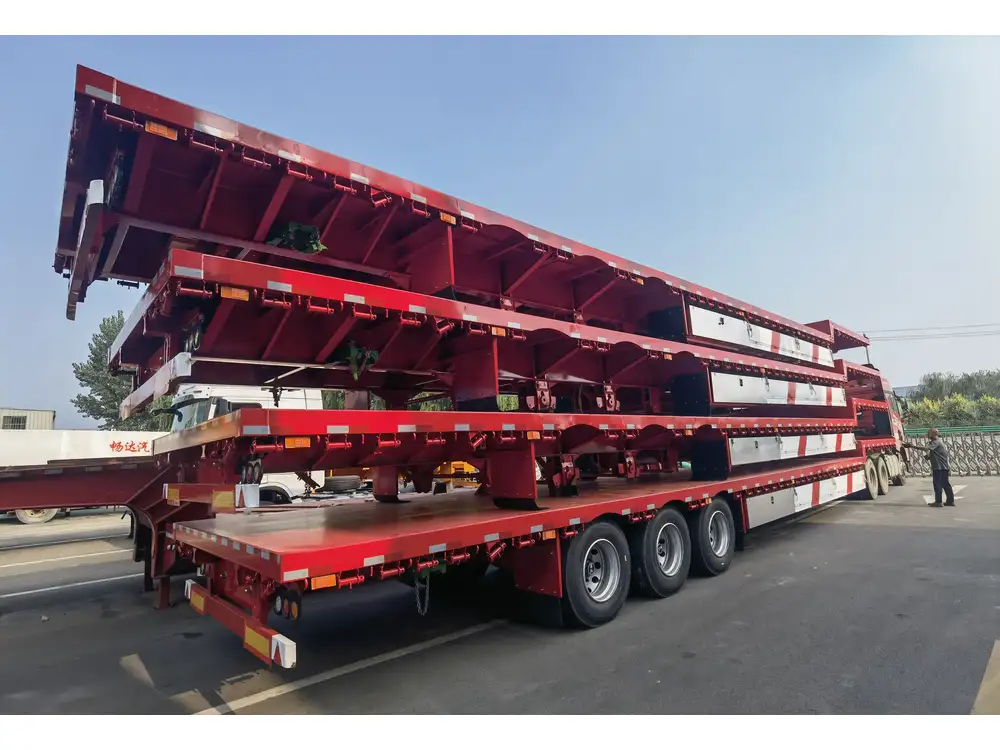
Emission Control
Adhering to emission standards and using low-emission vehicles contribute to environmental sustainability.
- Alternative Fuels: Explore the use of biodiesel or electric-powered trailers to reduce carbon footprint.
- Emission Monitoring: Implement systems to monitor and manage emissions from transportation operations.
Waste Reduction
Minimizing waste during transportation enhances sustainability.
- Reusable Packaging: Encourage the use of reusable containers and packaging materials.
- Efficient Loading Practices: Maximize load capacity to reduce the number of trips required, lowering overall waste.
Cost Management in Cement Transportation
Effective cost management strategies ensure that cement transportation remains economically viable.

Fuel Cost Optimization
Fuel is a significant expense in transportation. Strategies to optimize fuel costs include:
- Efficient Route Planning: Reduces unnecessary mileage and fuel consumption.
- Driver Training: Educate drivers on fuel-efficient driving techniques, such as maintaining steady speeds and reducing idling time.
Maintenance Cost Control
Regular maintenance prevents costly repairs and extends trailer lifespan.
- Scheduled Maintenance: Adhere to maintenance schedules to identify and fix issues early.
- Preventive Measures: Implement preventive maintenance practices to avoid major breakdowns.
Load Optimization
Maximizing the load per trip reduces the number of trips needed, lowering overall transportation costs.
- Bulk Transport Solutions: Utilize bulk cement trailers to increase load capacity.
- Efficient Packaging: Optimize packaging methods to maximize space utilization within trailers.
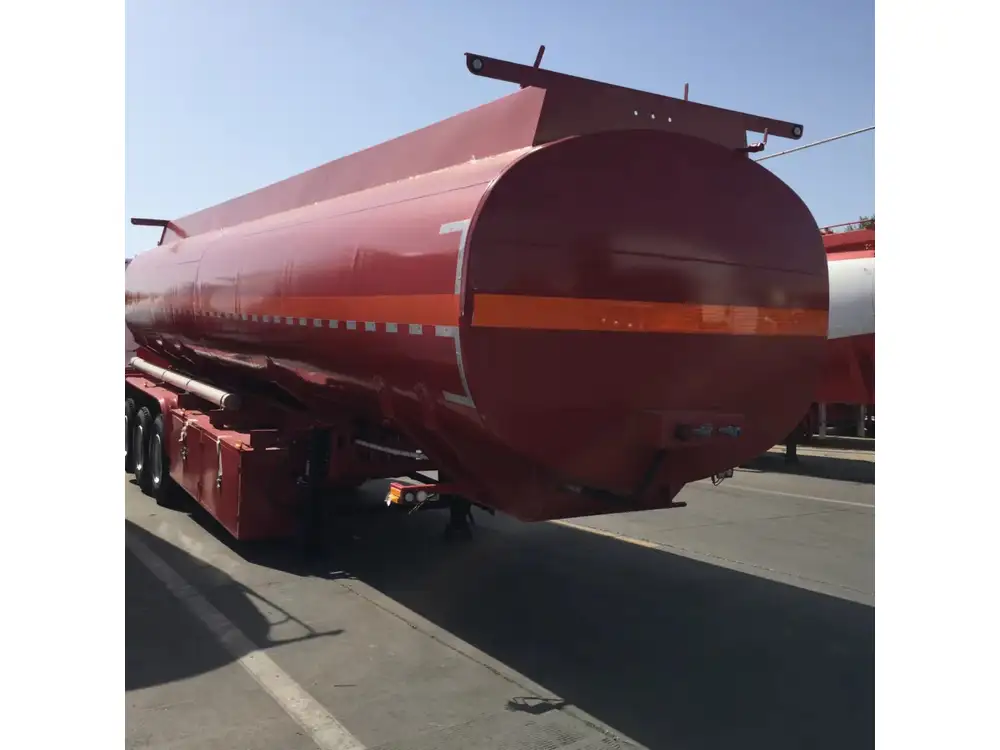
Regulatory Compliance and Standards
Compliance with transportation regulations is essential to avoid legal issues and ensure safe operations.
National and Local Regulations
Understand and adhere to the transportation laws applicable in different regions.
- Licensing Requirements: Ensure that drivers possess the necessary licenses for cement transport.
- Weight and Size Limits: Comply with regulations regarding trailer weight and dimensions to prevent fines and disruptions.
Safety Standards
Adhering to safety standards protects both the cargo and the personnel involved in transportation.
- Load Securing Standards: Follow industry guidelines on how to secure cement loads effectively.
- Trailer Safety Features: Equip trailers with necessary safety features, such as braking systems and reflectors.
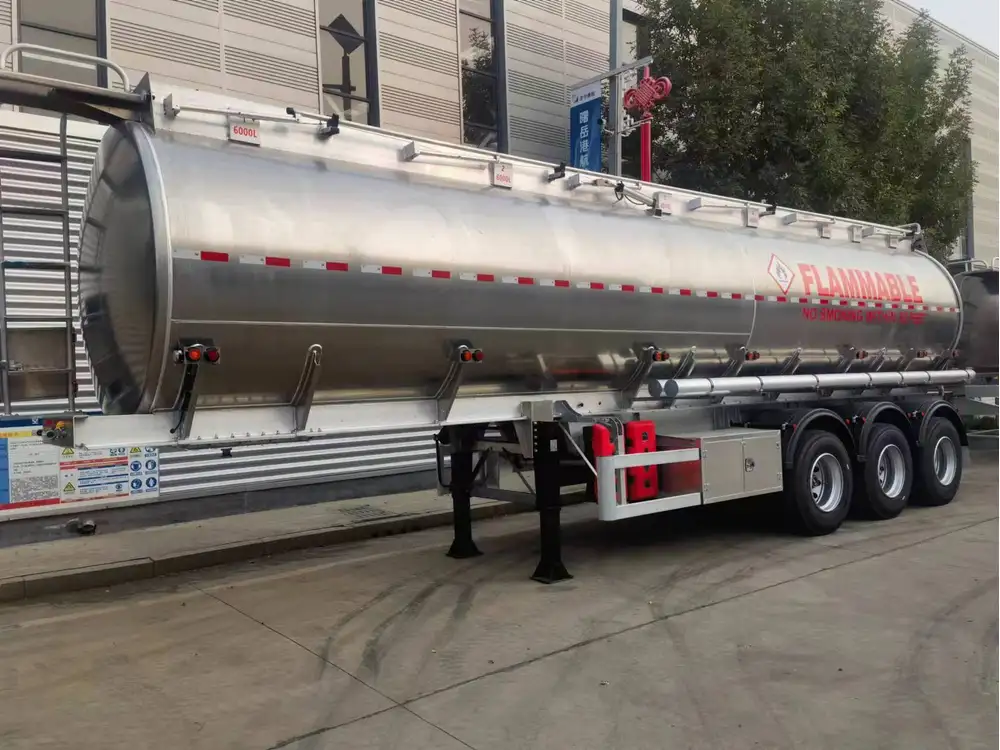
Documentation and Record-Keeping
Maintain accurate records to ensure compliance and facilitate smooth operations.
- Transport Documentation: Keep detailed records of shipments, including manifests and delivery receipts.
- Compliance Audits: Regularly review and audit transportation practices to ensure adherence to regulations.
Benefits of Partnering with CarMax Vehicle
Choosing CarMax Vehicle for your cement transportation needs offers numerous advantages:
Superior Trailers
Our trailers are engineered for durability, efficiency, and safety, ensuring that your cement reaches its destination in pristine condition.
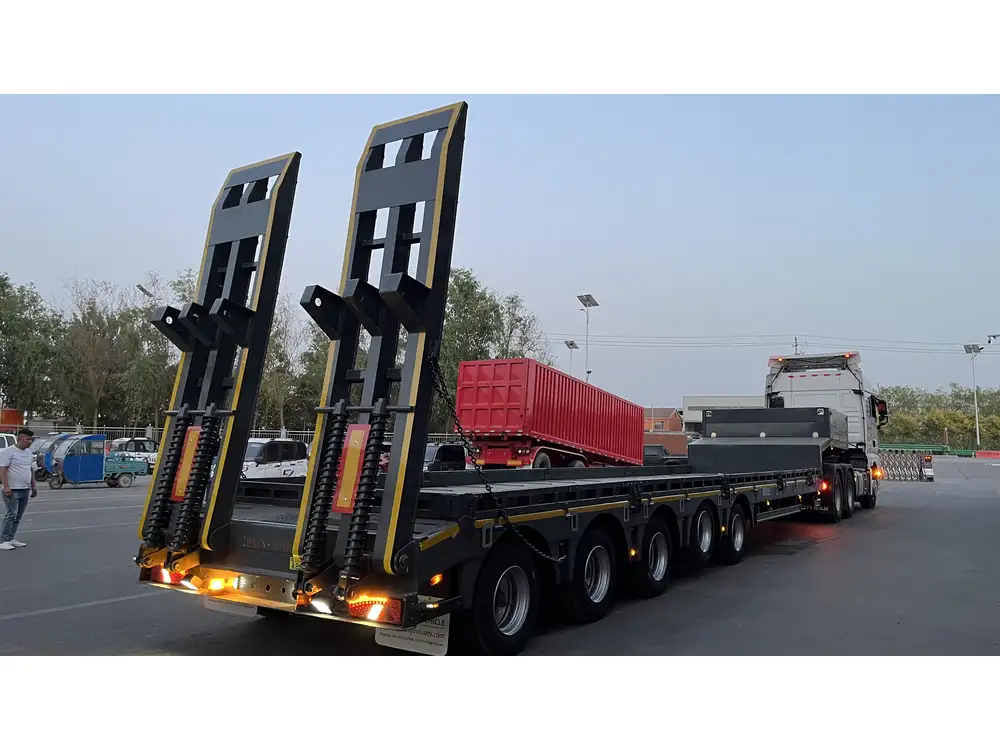
Customized Solutions
We provide tailored transportation solutions to meet the specific needs of your projects, whether large-scale or small.
Exceptional Support
Our team offers comprehensive support, from selecting the right equipment to providing maintenance services, ensuring seamless transportation operations.
Technological Integration
Leverage our advanced technologies for tracking, sealing, and automating your cement transport processes, enhancing overall efficiency.

Case Studies: Successful Cement Transportation with CarMax Trailer
Case Study 1: Urban Construction Project
A major construction company required timely cement deliveries to a high-rise building site in a congested urban area. CarMax Trailer provided bulk cement trailers with precise route optimization and real-time tracking. The result was on-time deliveries with minimal disruptions, contributing to the project’s smooth progression.
Case Study 2: Rural Infrastructure Development
For a rural infrastructure project, transporting cement over long distances posed logistical challenges. CarMax Trailer offered fuel-efficient, durable trailers equipped with advanced sealing systems to prevent moisture ingress. This ensured cement quality upon arrival, supporting the project’s integrity and success.
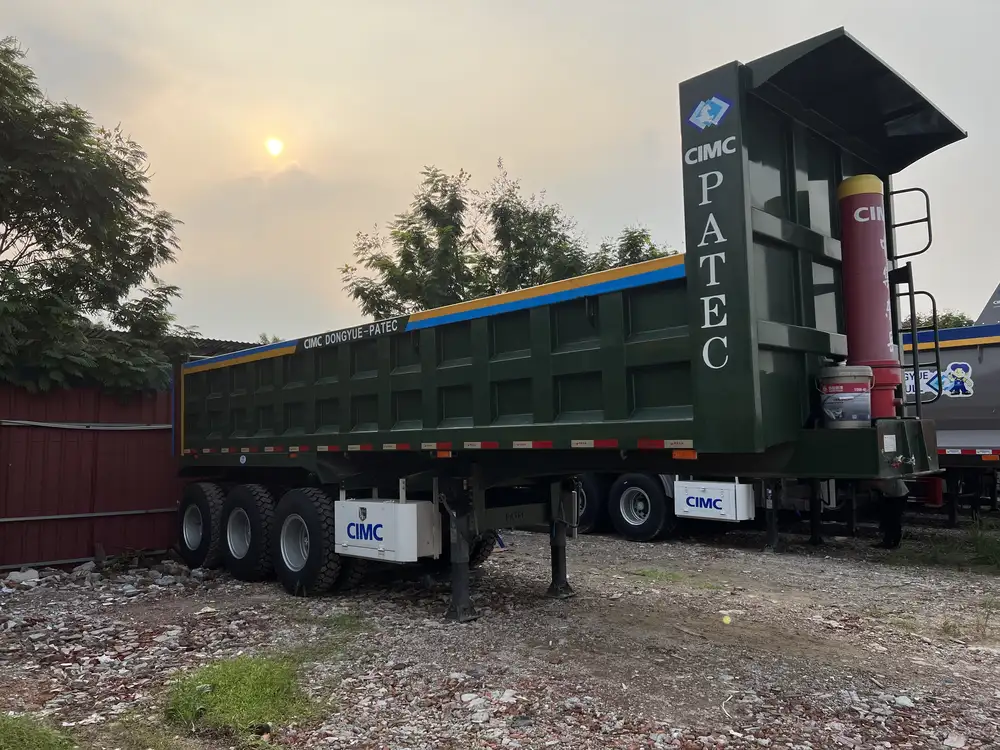
Future Trends in Cement Transportation
Staying ahead of industry trends ensures that cement transportation remains efficient and sustainable.
Automation and AI
The integration of automation and artificial intelligence (AI) in transportation can revolutionize cement logistics by optimizing routes, predicting maintenance needs, and enhancing overall operational efficiency.
Sustainable Materials
Developing trailers from sustainable materials reduces environmental impact and aligns with global sustainability goals.
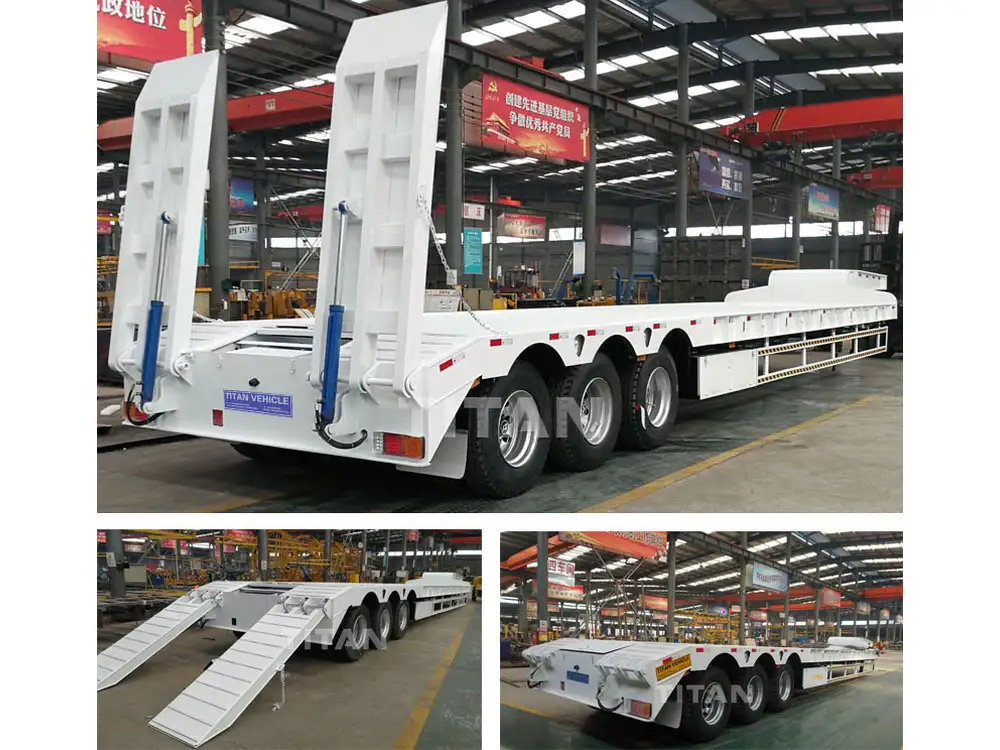
Smart Trailers
Smart trailers equipped with IoT devices provide real-time data on cargo conditions, vehicle performance, and environmental factors, enabling proactive management and decision-making.
Conclusion
Transporting cement requires meticulous planning, the right equipment, and adherence to best practices to ensure efficiency, safety, and cost-effectiveness. At CarMax Vehicle, we are committed to providing superior semi-trailers and comprehensive support to meet all your cement transportation needs. By implementing the strategies outlined in this guide, you can enhance your cement logistics operations, ensuring timely and secure deliveries that drive your construction projects forward.
Frequently Asked Questions
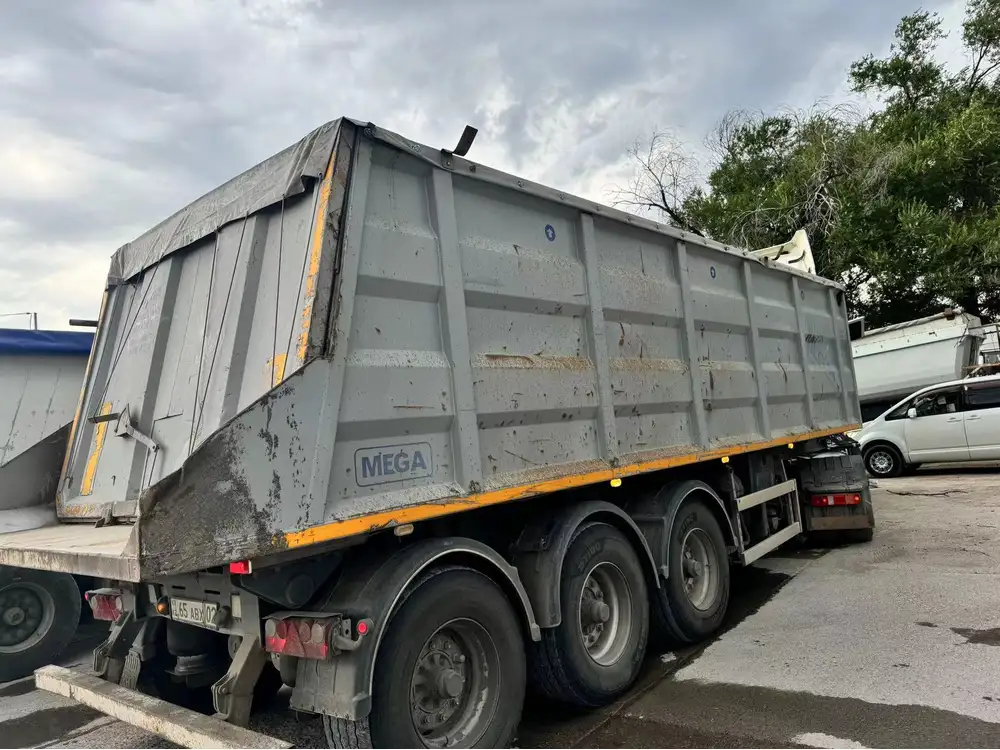
1. What are the key features to look for in a cement transportation trailer?
When selecting a trailer for cement transport, consider features such as bulk storage capacity, moisture-resistant seals, robust construction, and secure load-locking mechanisms. CarMax Trailer offers trailers specifically designed to meet these requirements, ensuring safe and efficient cement transportation.
2. How can I prevent cement from absorbing moisture during transport?
To prevent moisture absorption, use weather-resistant trailers with sealed containers. Additionally, ensure quick unloading to minimize the time cement spends in transit. CarMax Vehicle trailers are equipped with advanced sealing technologies to protect cement from moisture and contaminants.
3. What are the best practices for loading cement into a trailer?
Best practices include evenly distributing the cement load to maintain trailer balance, securing the load with appropriate straps and locking systems, and adhering to weight limits. Proper loading techniques ensure safe transportation and prevent accidents.

4. How does route optimization benefit cement transportation?
Route optimization reduces travel time, minimizes fuel consumption, and avoids potential delays caused by traffic or adverse weather conditions. By planning efficient routes, you can ensure timely deliveries and lower transportation costs.
5. What maintenance is required for cement transport trailers?
Regular maintenance includes routine inspections for leaks and structural integrity, timely repairs of any damages, and keeping the trailer clean to prevent contamination. Adhering to a maintenance schedule prolongs the lifespan of the trailer and ensures reliable performance.



